Fish Tried At Least 30 Times Independently: Vision, Not Limbs, Led Her Onto Land
Fish evolution hauling themselves onto the land was not by a chance. Around 350 million years ago, fish started landing themselves out of ocean. A new study on the diversity of existing amphibious fish says our friends from the ocean have been out of the ocean at least thirty times.
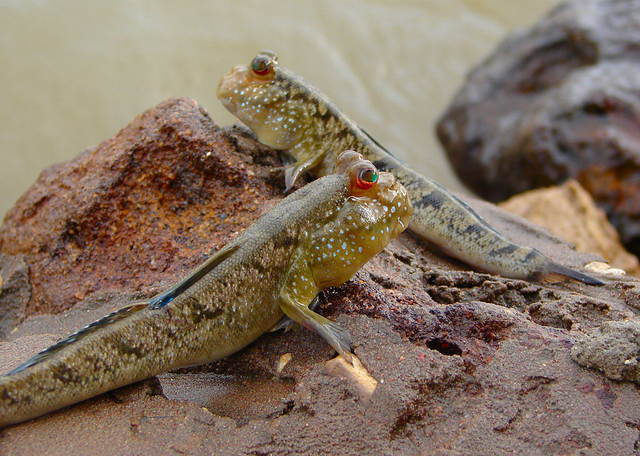
Periophthalmus barbarous (Atlantic mudskippers) photographed on the shore near Tenda-Ba in The Gambia
source
350 million years ago, the first fish landing is not luck. According to a new study on the diversity of existing amphibious fish species, our friends from the oceans have evolved their ability to land at least 30 times since ancient times. Their work has focused on the factors that have led to a dramatic shift in fish habits, which may provide clues as to how the fish should land initially.
Sandy Kawano, a comparative biologist from the National Institute for Mathematical and Biological Synthesis in Knoxville, Tenn., Who did not participate in the study, said: "Unexpectedly, These changes may not be as difficult to guess as before. "
Terry Ord and Georgina Cooke of the University of New South Wales, Kensington, Australia, conducted a number of scientific papers on the successful landing of fish for the study. This allows them to calculate how often modern fish adapt to shore life and determine if these terrestrial fish have something in common.
The two found 130 species of fish with varying degrees of land activity. After the rain, they swam the Anguilla rostrata between different reservoirs, with colorful coastal fish species Taurulus bubalis, and Periophthalmus barbarous, crawling in the quagmire, with globose eyes and arched fins.
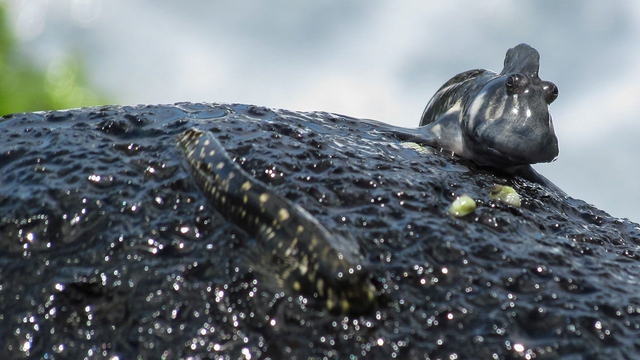
Mauritius's Alticus monochrus happily get out of the shackles of water, and it's definitely not the only one.
source
An example of this is found in fish pedigrees, which published in the June 2016 study in Evolution, claiming that 33 families contain at least one species of fish attracted to the ground (Papers: Repeated evolution of amphibious behavior in fish andits implications for the colonization of novel environments. The authors say, so we have reason to believe that landing evolution has occurred at least many times.
In order to construct a more complete genealogy, the authors studied in the field a group of particularly favorite coastal terrestrial fish, anchovy, it deserves our special attention. The team found that catfish had landed at least three times, possibly even seven times. One of the best is the Alticus arnoldorum, who, as adults, have sucker-shaped fins that help them hold their positions under the waves, jumping around the rocks and mating. These mullets are extremely offensive to the water, and if you're going after them, "they'll run deeper into the reef," Ord said.
During the study of these fish, the two found that two species of anchovy species classified as "marine organisms" actually spent a considerable amount of time on land. Ord claimed that if this phenomenon is also typical of other fish groups where researchers have found it more likely that landings may be favored, then the estimate for the number of evolved landings may be much higher than 33.
Kawano praised the team's integration of a variety of data from papers to field research and pointed out the ecologically diversity of land-locked species.
However, the transition to terrestrial seems to occur more often in intertidal zones: areas that are covered by water at high tide and exposed after low tide. Michel Laurin, a paleontologist from CNRS in Paris, said the discovery may provide clues to our inquiry into the habits of landing on ancestors. There are still some people who support the old view that the first batch of land-based fish is a freshwater adventure. However, Laurin said: "All of the recent discoveries imply that our ancestors came from the sea." We know that today the intertidal zone appears to be the base for landing, perhaps even hundreds of millions of years ago.
Fish landing, eyes grown dramatically
The eyes of the first transboundary species of land and water have grown dramatically before they grow strong legs.
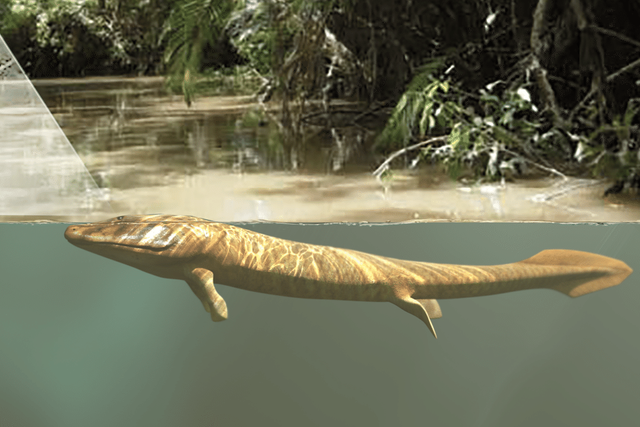
Tiktaalik peers out of the water
source
About 385 million years ago, fish started to land on land. After a while, their flattened fins gradually evolve into stout legs, eventually becoming feet and toes. They no longer wander in the water, but on a solid ground. Eventually, four-legged animals appeared in these pioneers, namely four-legged animal branches, including reptiles, amphibians and mammals like ours. The shift from water to land is so exciting that it is clear that people are bound to focus on their legs because they are the most noticeable organs of change and the four-legged animals are named for this, opening up their future.
But Malcolm MacIver from Northwestern University is more interested in their eyes.
The earliest quadrupeds had much larger eyes than their fish ancestors. MacIver had always thought that the bigger eyes had occurred after they had landed on land, allowing them to see further in order to plan their path. "That's an ignorance of speculation," he said later. In fact, MacIver found that large eyes evolved first in footsteps after studying fossils of large numbers of amphibian (extinct species, fish, and transitional species between quadrupeds).
As the eyes get larger, their position is also moved to the owner's head, allowing them to float on the surface like the current crocodile. These traits allow them to see farther than their aquatic ancestors, to see a wider range of space, which in turn can predators on the water's edge. It may be that this capability has given them the motivation to completely leave the body of water and to promote the evolution of the limbs that they are proud of. Perhaps, it is the eyes rather than the legs, leading them to land invasion. As MacIver points out, "the way to land is to first become like a crocodile."
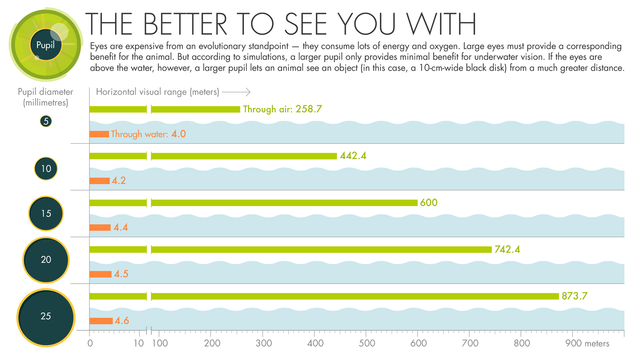
source
"This study helps explain how fish born for water are seduced ashore without losing their competitive edge," said Lauren Sallan of the University of Pennsylvania, who was not involved in the work.
Your eyes do not become fossilized, but you can estimate their size by measuring the orbital fossils of fossilized skulls. MacIver and colleagues, including eye fossil expert Lars Schmitz, measured the skulls of 59 species of finfish, amphibian-to-footed quadrupeds. The results showed that the eyes of this group increased almost threefold in 12 million years. How could this be?
The eyes are extravagant organs, which consume a great deal of energy to support them, and need more if they grow older. If the fish are willing to pay these costs, it must be due to the eyes it will bring some advantages. It seems intuitively that big eyes can make you see more clearly or further, but MacIver's team found it otherwise. Several shallow, fresh-water environments that mimic the fossil species life-from day to night, from fresh water to muddy water, have shown that the large eyes under water bring only a little bit of sight-lifting. But once these animals float on the water to spy on, it is very different. In the air, big eyes can see 10 times farther than underwater and glance at 500 million times larger areas.
In the air, big eyes are also easier to recover the cost. Short-range vision predators must constantly move around to explore the immediate area, while large-eyed species find distant food that recovers the energy costs they would have spent on foraging. "Long-term vision brings free lunches," MacIver said. "There is no need to move around, just look around to explore other places."
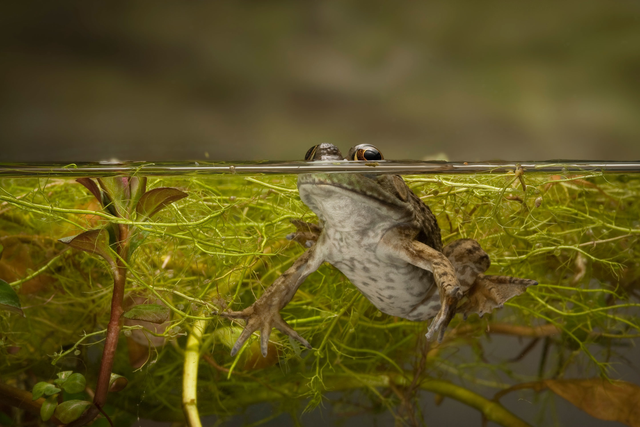
source
These early hunters will see many delicious prey. Centipedes and Malu colonized land millions of years ago, and never encountered amphibious predators. "I can imagine guys like Tiktılik lurking like a crocodile and bite when waiting for a giant millipede to pass by," MacIver said. "All invertebrates on land can not be associated with it confrontation."
That's what MacIver thinks might happen: In shallow freshwater rivers and lakes, some fish gradually shift their eyes to the top of the skull to make better use of the sun's rays. This occurred in the Devonian, when the Earth's oxygen levels were declining. Creatures such as Tiktulik evolved breathing holes behind their eyes and behind their eyes in an effort to get enough oxygen in the water. They start to surface more frequently to prey on prey that wanders around the water. At first they can only see blurred outline of prey, but even small changes in the eyes can yield considerable benefits. As time goes on, their eyes get bigger. Ultimately, their limbs have also changed, allowing them to further exploit this new world, a world that has not only solid land but also a broader space.
The theoretical part is speculative, but it follows the laws and data that the MacIver team discovered from their fossils. Jenny Clack from Cambridge University, who specializes in the evolution of quadrupedal animals, was delighted that the team measured the size of the eye socket, something the other scientists noticed but never recorded in such detail. "But the orbital size is not always related to the size of the eyeball and it is more accurate to look at the scleral ring (a piece of bone found around the eyes of many animals)," she said. MacIver retorted: "In the fossils I researched with Schmitz, the association between the eyeball and the eye socket is very good and the presence of the bone ring does not seem to affect our prediction."
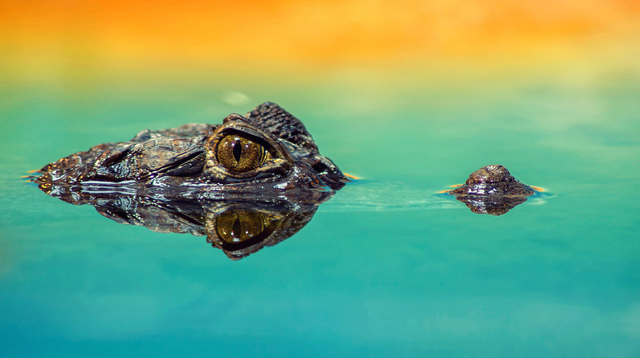
source
"They used a very creative new approach to an old problem," said Neil Shubin of the University of Chicago, a Tinkerick discoverer. Most people who study the evolution of quadrupeds are focused on their limbs and jaws. Instead, the MacIver team focuses on sensory organs - the eyes. And they speculate that the eye is related to the evolution of another key organ, the brain.
MacIver's idea is that remote vision changes the type of intelligence that animals can benefit from. Under water, the fish is like a driver galloping down the heavy fog. It can only respond to something in sight, as the saying goes, "life is so sudden." But quadrupeds on land can glance much larger areas. In some ways, big eyes let you see farther time and space. Today, capabilities like planning, strategic thinking, and complex decision-making generate more revenue. Animals become less passive and more motivated.
He calls this the Buena Vista Club Hypothesis. "Maybe having a larger capacity of consciousness allows us to interrupt the unconscious reflections of connection and actions and separate our thoughts from our actions," he speculates. "Now you are picking the best ideas for your environment. , Though it looks like it is original consciousness. "

References for Text and Images:
- https://www.quantamagazine.org/why-did-life-move-to-land-for-the-view-20170307/
- https://www.theatlantic.com/science/archive/2017/03/in-the-invasion-of-land-big-eyes-came-before-strong-legs/518883/
- http://animals.mom.me/sensory-organs-found-frogs-head-3278.html
- https://phys.org/news/2017-03-vision-limbs-fish-million-years.html
- http://www.ibtimes.co.uk/evolution-advanced-vision-not-limbs-drove-ancient-fish-water-land-1610370
Support @steemstem and the #steemstem
project - curating and supporting quality STEM
related content on Steemit

This post has received a 1.40% upvote from thanks to: @punjolife.
thanks to: @punjolife.
For more information, click here!!!!
Send minimum 0.050 SBD|STEEM to bid for votes.
Do you know, you can also earn daily passive income simply by delegating your Steem Power to @minnowhelper by clicking following links: 10SP, 100SP, 500SP, 1000SP or Another amount